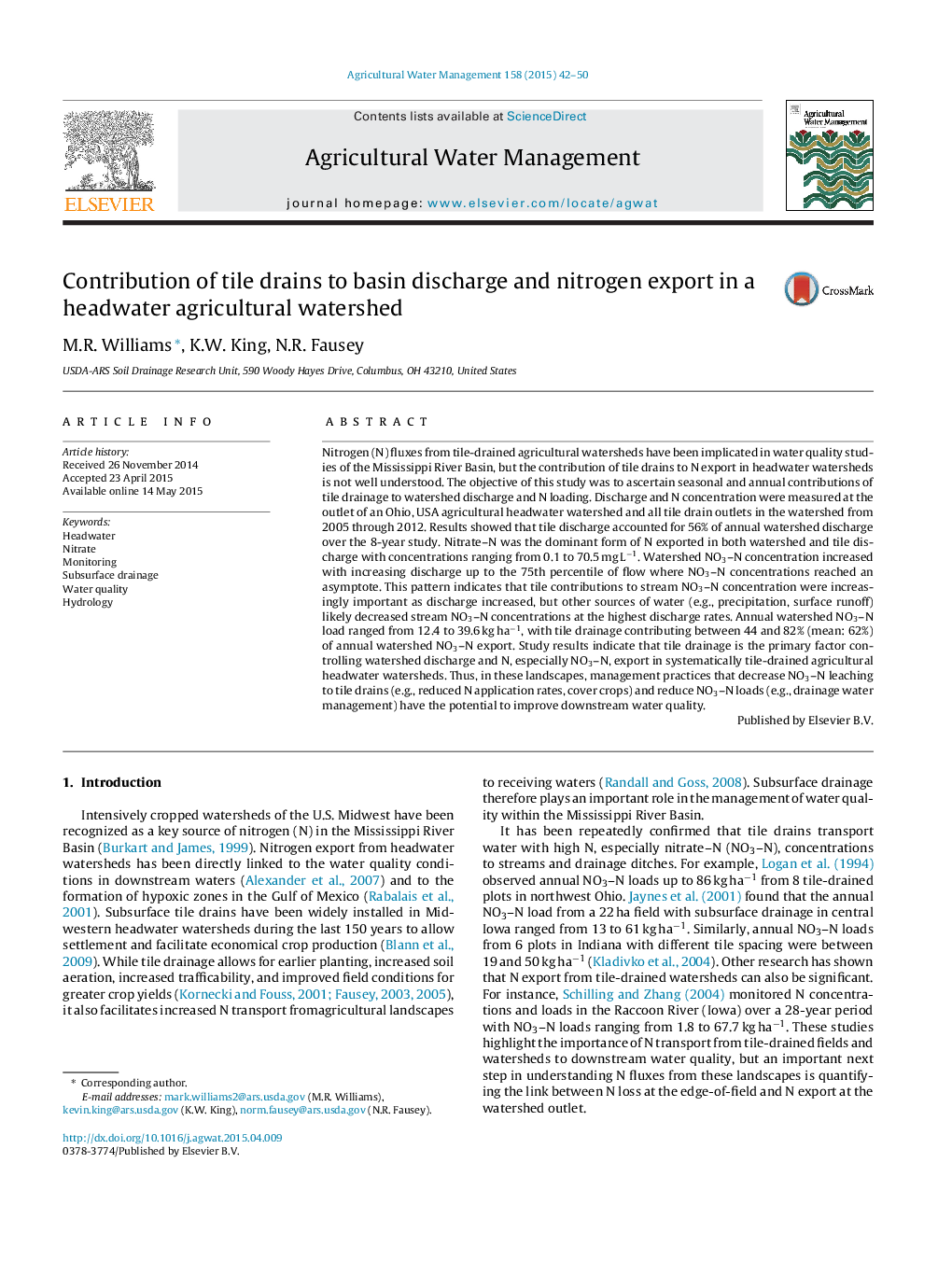| Article ID | Journal | Published Year | Pages | File Type |
|---|---|---|---|---|
| 4478420 | Agricultural Water Management | 2015 | 9 Pages |
•Contributions of tile drainage to watershed discharge and N loading were assessed.•Tile drainage accounted for 56 and 62% of annual watershed discharge and N export.•The effect of tile drains on stream N concentration increased as discharge increased.•Practices that decrease N loads from tile drains may improve downstream water quality.
Nitrogen (N) fluxes from tile-drained agricultural watersheds have been implicated in water quality studies of the Mississippi River Basin, but the contribution of tile drains to N export in headwater watersheds is not well understood. The objective of this study was to ascertain seasonal and annual contributions of tile drainage to watershed discharge and N loading. Discharge and N concentration were measured at the outlet of an Ohio, USA agricultural headwater watershed and all tile drain outlets in the watershed from 2005 through 2012. Results showed that tile discharge accounted for 56% of annual watershed discharge over the 8-year study. Nitrate–N was the dominant form of N exported in both watershed and tile discharge with concentrations ranging from 0.1 to 70.5 mg L−1. Watershed NO3–N concentration increased with increasing discharge up to the 75th percentile of flow where NO3–N concentrations reached an asymptote. This pattern indicates that tile contributions to stream NO3–N concentration were increasingly important as discharge increased, but other sources of water (e.g., precipitation, surface runoff) likely decreased stream NO3–N concentrations at the highest discharge rates. Annual watershed NO3–N load ranged from 12.4 to 39.6 kg ha−1, with tile drainage contributing between 44 and 82% (mean: 62%) of annual watershed NO3–N export. Study results indicate that tile drainage is the primary factor controlling watershed discharge and N, especially NO3–N, export in systematically tile-drained agricultural headwater watersheds. Thus, in these landscapes, management practices that decrease NO3–N leaching to tile drains (e.g., reduced N application rates, cover crops) and reduce NO3–N loads (e.g., drainage water management) have the potential to improve downstream water quality.
